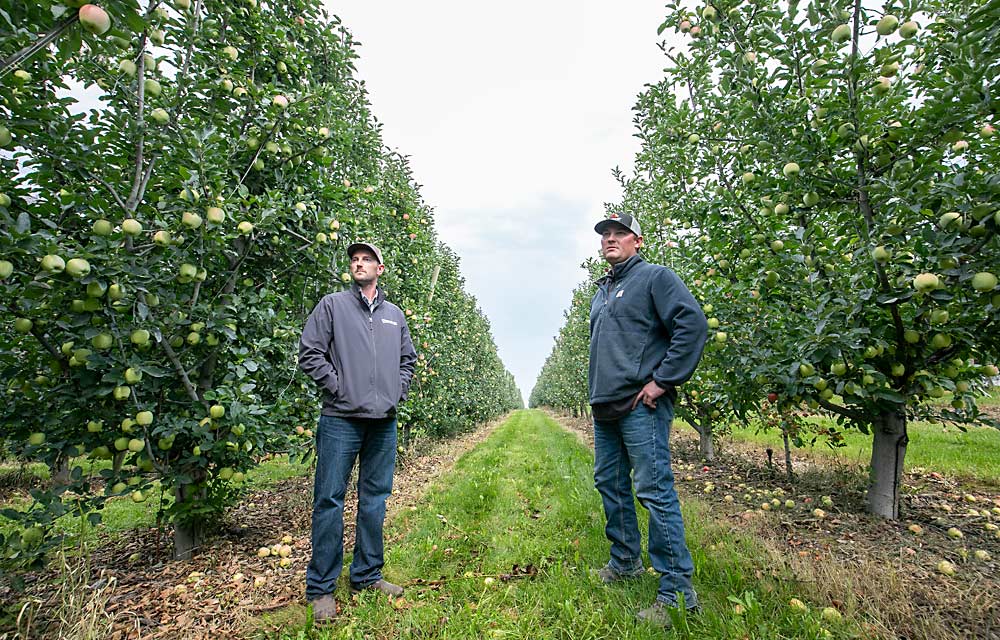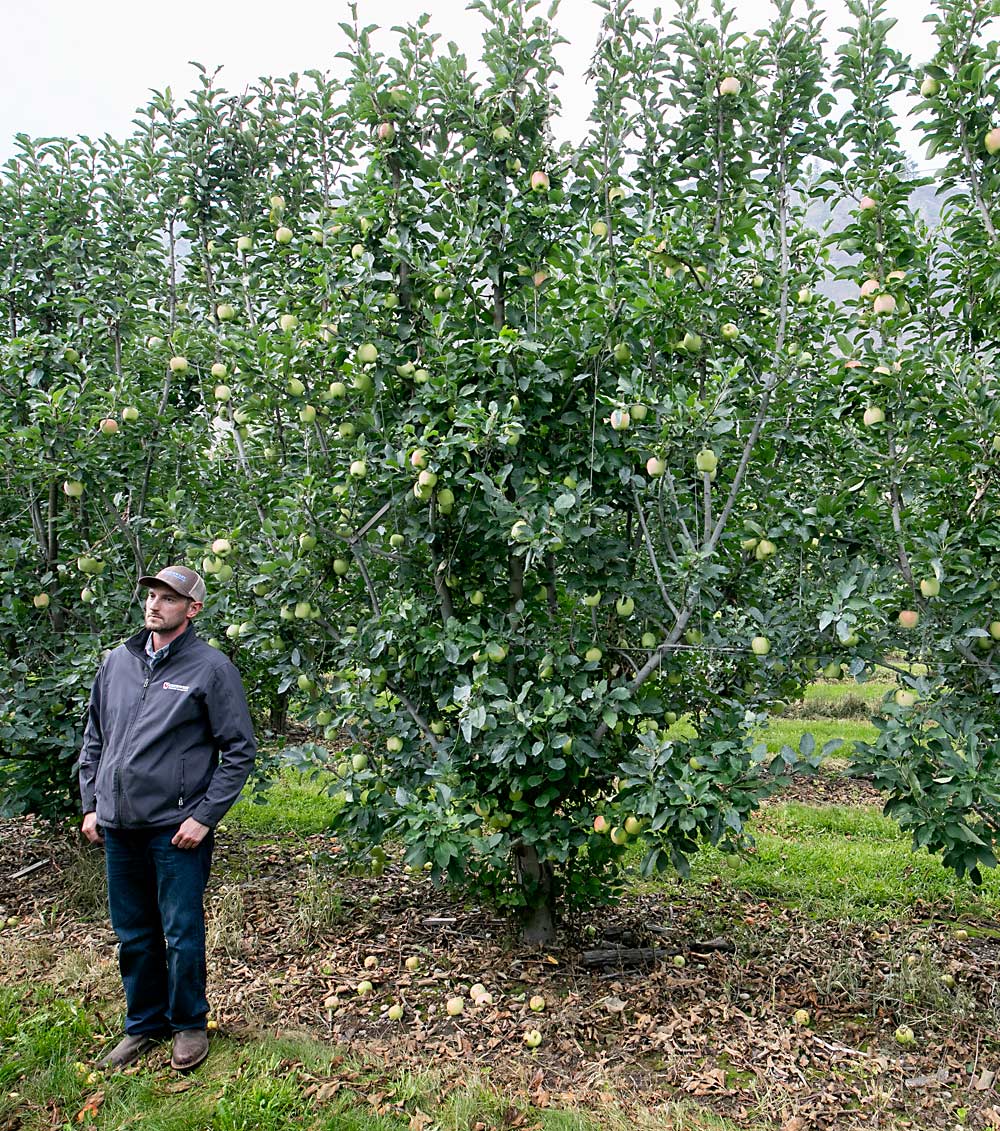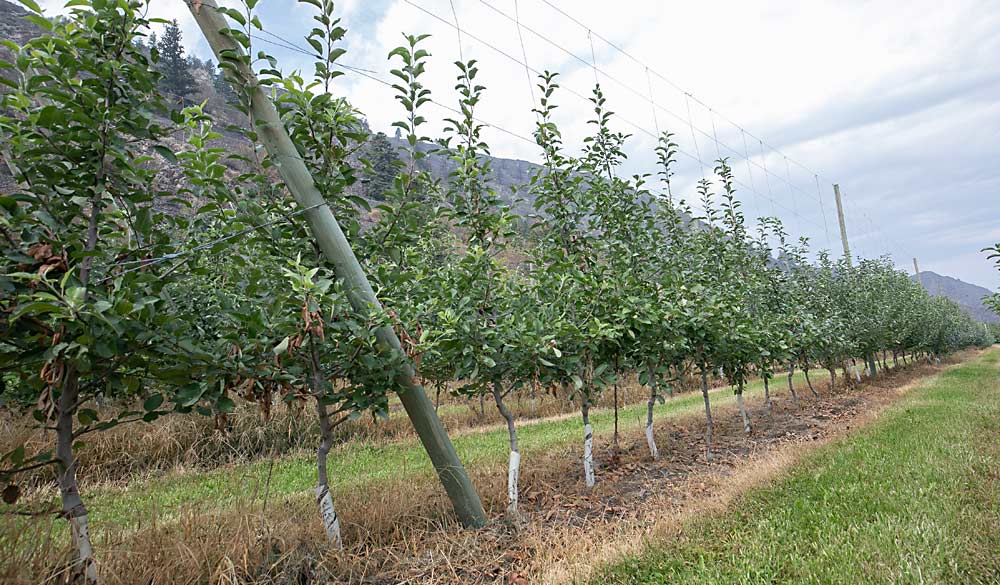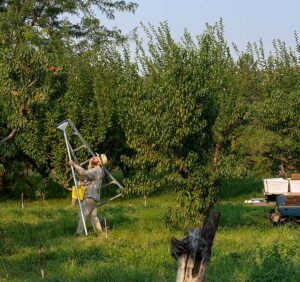
On a steep V-trellis in late summer, Ambrosia apples hung on the outside of a flat canopy wall, exposed evenly to sunlight and easy to reach when pickers showed up a few weeks later.
Only by looking closely at the trunks would you know that just four years ago the block was full of freestanding Gala trees at 10-foot spacing.
Corbin and Gerad Moser have become quick studies at grafting to modernize their orchards with higher-value varieties without borrowing money.
“This is a great way for us to get a higher density, more production at a cheaper cost,” said Corbin.
Though fourth-generation growers, the brothers have only recently invested in their own blocks and consider financial caution a key ingredient in their startup strategy.
The brothers made the grafts in 2020, splitting the trunks on Bud.118 rootstocks into a Y and coaxing the new scion into four or five leaders on each side. A few volunteer Gala limbs provide pollinizer diversity.

They aim to harvest about 60 to 65 bins per acre each year in the organic transitioning block.
The Mosers intend to turn to mechanization as the grafts mature. They will prune by hand in summer to expose the fruit to sunlight but want to mechanically hedge in fall to create a fruiting wall and use a hedger to lower the tops of trees. They are still working out the kinks involved with implementing the hedgers. Although they haven’t yet integrated the tools, they expect the mechanical hedging would probably work in the grafted block. They also plan to try deleafers.
Near the Ambrosia grafts, the Mosers have a block of WA 38, the apple marketed as Cosmic Crisp, grafted over from PremA17, the variety marketed as Smitten, planted just five years ago.
As those Smittens started to mature, the brothers didn’t like the changes they saw in the market for the variety. So, they switched, even though the block was relatively new.
“So much of the game of this industry is finding the right varieties,” Gerad said. “And at the time, (Smitten) was one that we looked at. And then as soon as we planted it, and there was some on the market, we made a drastic decision to move to a different direction.”

Waiting any longer would have made the decision even more expensive, they said.
The trees were already in 3-foot by 10-foot spacing on Nic.29 rootstocks and already had a trellis and drip irrigation. The decision to graft delayed production by only two years.
The Mosers don’t oppose new plantings. In fact, they would usually prefer it. But starting a business requires financial caution.
“We have blocks that we planted,” Corbin said. “And for the future, that’s the way to go as you get the capital, but you can’t overextend yourself.”
—by Ross Courtney







Leave A Comment